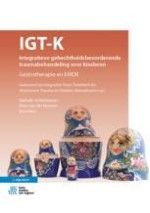Samenvatting
Integratieve Gehechtheidsbevorderende Traumabehandeling voor Kinderen (IGT-K) richt zich op posttraumatische stresssymptomen, gehechtheidsproblemen, gedragsproblemen en problemen in de emotieregulatie bij chronisch getraumatiseerde kinderen. Dit hoofdstuk gaat over de gevolgen van ingrijpende gebeurtenissen voor het leven van een jeugdige en de specifieke problemen waar een problematische gehechtheid of een gehechtheidsstoornis toe kunnen leiden. Meervoudige interpersoonlijke traumatisering komt op jonge leeftijd veelvuldig voor, kan het neurobiologische systeem van het kind blijvend beïnvloeden en een breed spectrum aan klachten tot gevolg hebben. In de klinische praktijk blijkt dat deze kinderen niet enkel traumatische herinneringen moeten verwerken, maar dat bij hen ook herstel van communicatie en vertrouwen binnen het gezin nodig is. Daarnaast is bekend dat er een groep kinderen en gezinnen na kindermishandeling is waarbij bewezen effectieve behandelingen niet lukken, omdat de kinderen vanwege het brede klachtenpatroon hier nog niet ontvankelijk voor zijn. Voor deze groep kinderen is er nu een behandeling op maat: IGT-K. De rationale achter IGT-K wordt in dit hoofdstuk uiteengezet.

